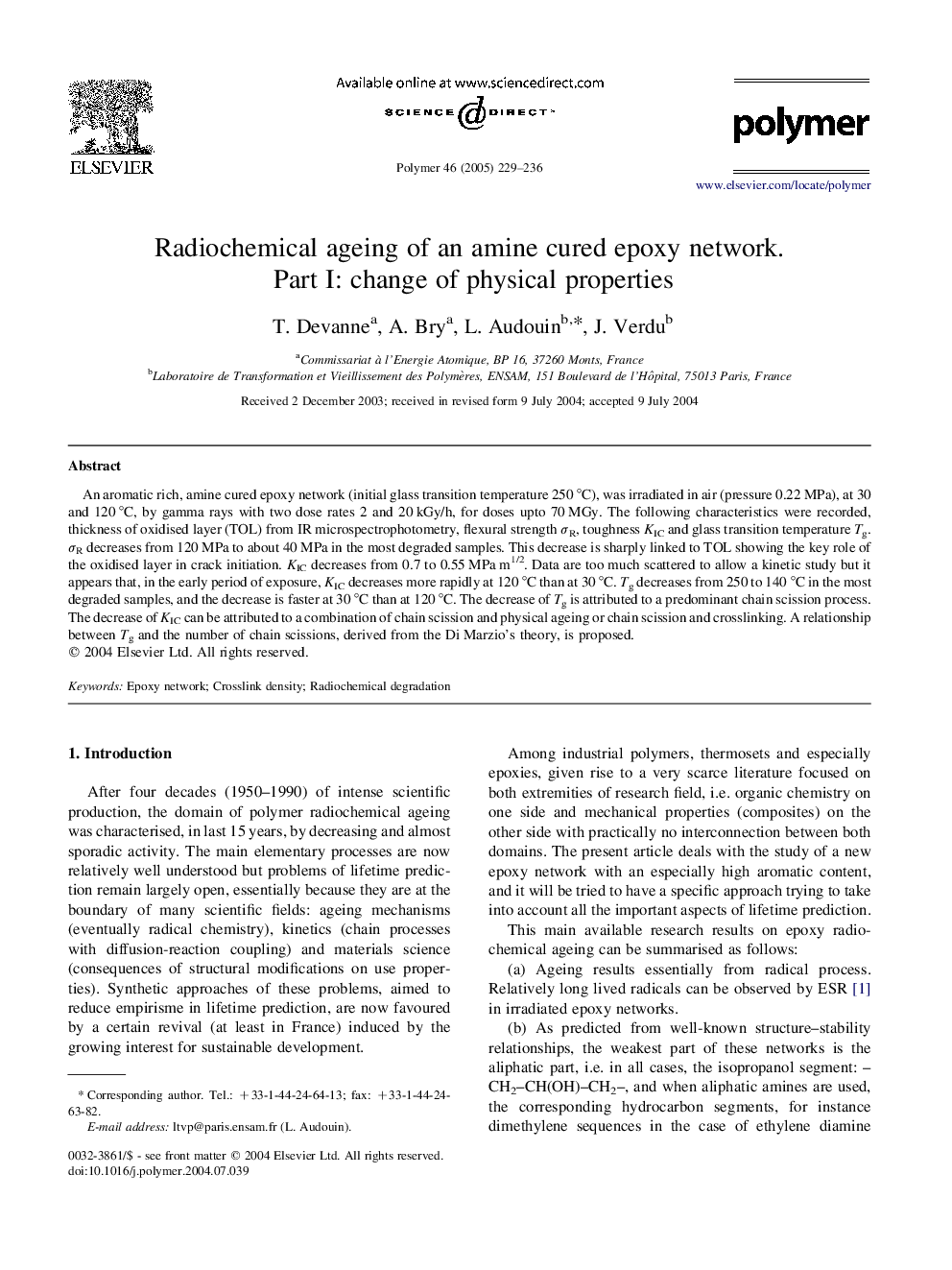| Article ID | Journal | Published Year | Pages | File Type |
|---|---|---|---|---|
| 9559773 | Polymer | 2005 | 8 Pages |
Abstract
An aromatic rich, amine cured epoxy network (initial glass transition temperature 250 °C), was irradiated in air (pressure 0.22 MPa), at 30 and 120 °C, by gamma rays with two dose rates 2 and 20 kGy/h, for doses upto 70 MGy. The following characteristics were recorded, thickness of oxidised layer (TOL) from IR microspectrophotometry, flexural strength ÏR, toughness KIC and glass transition temperature Tg. ÏR decreases from 120 MPa to about 40 MPa in the most degraded samples. This decrease is sharply linked to TOL showing the key role of the oxidised layer in crack initiation. KIC decreases from 0.7 to 0.55 MPa m1/2. Data are too much scattered to allow a kinetic study but it appears that, in the early period of exposure, KIC decreases more rapidly at 120 °C than at 30 °C. Tg decreases from 250 to 140 °C in the most degraded samples, and the decrease is faster at 30 °C than at 120 °C. The decrease of Tg is attributed to a predominant chain scission process. The decrease of KIC can be attributed to a combination of chain scission and physical ageing or chain scission and crosslinking. A relationship between Tg and the number of chain scissions, derived from the Di Marzio's theory, is proposed.
Keywords
Related Topics
Physical Sciences and Engineering
Chemistry
Organic Chemistry
Authors
T. Devanne, A. Bry, L. Audouin, J. Verdu,
